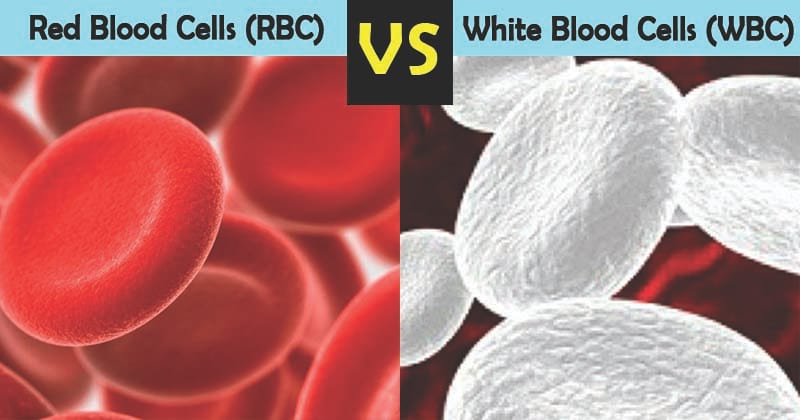
Interesting Science Videos
RBC vs WBC (Table form)
| S.N. | Characteristics | Red Blood Cells (RBCs) | White Blood Cells (WBCs) |
| 1. | Alternative Name | Erythrocytes | Leucocytes |
| 2. | Origin | In the embryonic phase, they are formed in the liver and spleen. However, after birth, they are formed in the red bone marrow. | They are formed in red bone marrow, lymph nodes, spleen, etc |
| 3. | Process of Formation | Formation of RBCs is called “Erythropoiesis” | Formation of WBCs is called “Leucopoiesis” |
| 4. | Abundance | More abundant (4-5 million /mm3) They are the most abundant cell in the blood, accounting for about 40 to 45 percent of its volume. | They are much fewer in number than red blood cells, accounting for about 1 percent of blood (8000 /mm3). |
| 5. | Size | Smaller than WBC ( 0.008 mm diameter ) | Larger than RBC (0.02mm) |
| 6. | Shape | Biconcave disc-shaped | Irregular or round in shape |
| 7. | Colour | Red cells are pinkish‐brown in color. | White cells are colorless. |
| 8. | Hemoglobin | The complex protein, hemoglobin, is the major constituent of RBCs. | Hemoglobin is absent in WBCs. |
| 9. | Nucleus | The nucleus is absent (anucleate). | Present and may be bilobed, irregular or round. |
| 10. | Circulatory system | Belong to the cardiovascular system | Belong to the lymphatic system |
| 11. | Types | Single type. | In healthy people, there are at least five types of white cells in the circulating blood. White cells are divided into granulocytes, monocytes, and lymphocytes. |
| 12. | Number Increment | Number increases during exercise or when at high altitudes. | The infection leads to an increase in the number of WBCs. |
| 13. | Life span | The average life span of 120 days | Life span ranges from 5-21 days. |
| 14. | Motility | Non-motile but can move through circulation and have the ability to squeeze through small capillaries. | Generally motile. |
| 15. | Movement | Movement is Primarily between the cardiovascular system | Between the cardiovascular and lymphatic systems. |
| 16. | Movement type | Do not leave the blood vessel | They can leave blood from capillaries and land in tissues. |
| 17. | Rouleaux formation | Forms stacks or aggregation called Rouleaux | Do not form Rouleaux |
| 18. | Related disorders | Disorders result in anemia, thalassemia, polycythemia vera, etc. | Lymphoma, Leukemia, Myelodysplastic syndrome (MDS) |
| 19. | Function | Carry respiratory gases- oxygen and carbon dioxide. Also, it contributes to blood viscosity. | Phagocytosis and defensive role including antibody production. |
References
- https://www.livestrong.com/article/106131-white-blood-cells-functions/
- https://www.diffen.com/difference/RBC_vs_WBC
- https://theydiffer.com/difference-between-red-and-white-blood-cells/
- http://simplebiologyy.blogspot.com/2015/04/table-comparison-between-red-blood-cells-erythrocytes-white-blood-cells-leucocytes-platelets-thrombocytes.html
- http://www.hematology.org/Patients/Basics/

Awesome…..